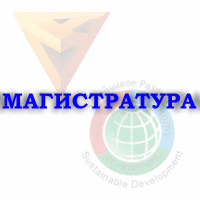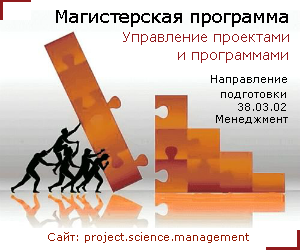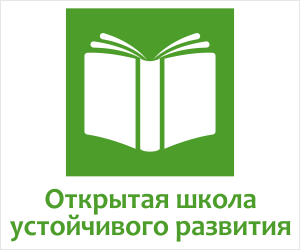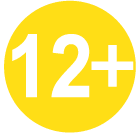- The upper left corner before the title of the article you must specify the UDC (Universal Decimal Classification) and / or the BBC and / or DOI, and / or other indices or classification systems: Times New Roman, 10 pt, capital letters, normal font, text to the left, 12 pt interval after indent text.
- The following article title: Times New Roman, 14 pt, in capital letters, bold, text to the left, 12 pt interval after indent text. Title of the article should not contain more than 80 characters, including spaces. Shifts in words and end of a paragraph mark between the header line is not allowed. Point at the end of the article’s title is not assigned.
- Information about the author (s): Times New Roman, 10 pt, regular font text to the left, including:
- surname, first name, middle name (in full);
- academic degree (abbreviated);
- academic title;
- place of work of each artist in the nominative case. Can be written in the position of the author. Clearly important, not allowing other interpretations, specify the location of a particular website. If all the authors work or study in the same institution, you can omit the place of work of each author separately;
- the name of the institution where the work was performed;
- electronic and postal addresses and telephone numbers of authors and responsible for the conduct of correspondence related to the article.
If several authors are from different organizations, after names of authors must specify superscript Arabic numerals in parentheses links (1, 2, 3 …), and the organization as a superscript to do decryption.
- Abstract— The article is preceded by a brief summary (up to 10 lines): Times New Roman, 12 pt, regular, italic, text width, 12 pt interval after indent text. The abstract should indicate the purpose of the study, basic procedures and methods, results and conclusions. It should be highlighted in the new and important aspects of research or development. We recommend using quantitative indicators, where possible.
- After annotations are keywords (one or two lines): Times New Roman, 10 pt, normal font, capital letters, the text to the left, 12 pt interval after indent text. Each keyword or phrase separated by a comma or a semicolon.
- Summary of the article. Formatting options for the main text:
- format — А4;
- font — Times New Roman;
- font size — 12 pt;
- mark — normal;
- line spacing — half;
- indention — 1.25;
- page margins: top — 2 cm, bottom — 2 cm, left — 2,5 cm, right — 2.5 cm;
- pagination at the top right of the page.
The main part of the article should contain an introduction to the problem, and the justification for the purpose of research or development, reference works directly related to the subject, materials and methods, experimental part, actions and results, discussion, practical application of the findings or conclusions.
Small parts of the text may be italic, and underlined text, the text smaller (up to 10 pt), if other methods can not identify an individual sense of the material.
Small parts of the text may be italic, and underlined text, the text smaller (up to 10 pt), if other methods can not identify an individual sense of the material.
- If the article contains thematic sections, the headings should be: Times New Roman, 12 pt, bold, left-justified text, indent 1.25; 6 Fri interval after indent text.
- Explanation of abbreviations is given when they are first used..
- Figures should be clearly understood and presented as in the text, and in the form of separate files (preferred formats *. Tif, *. Jpg, *. Gif), on a white background in black and white or color version. Each figure should have a caption signature (name and serial number): Times New Roman, 10 pt, bold, centered text, the bottom of Figure 6 Fri interval after indent text) and placed in the text after the reference.
- Tables should be clearer, placed on the page width. Table is also placed after the references in the text. Each table should have the serial number and name (Times New Roman, 10 pt, bold, tekstpo center, top of the table, 6 pt interval indent text). Row and column headers should be formulated concisely and accurately. In table use common abbreviations and approved in SI units of measurement of physical and mathematical quantities. If other system units, it should be stipulated separately. Single table or figure in the article should not be numbered!
- When typing formulas and symbols of the formulas in the text you want to use the Equation Editor Word (Microsoft Equation) co standard settings: text — 11 Fri, large index — 8 Fri, small — 6 Fri, large symbol — 12 Fri, small symbol — 10 pt. Equations should be numbered. However, if there are no additional specific formula (return) references in the text or she is the only numbering it is not needed.
- Used to refer to the mathematical and physical quantities Greek letters in the text are also gaining only using Equation Editor Word (Microsoft Equation) direct and Latin — in italics. Units indicate, in accordance with the International System (SI).
- Links to materials, published in the traditional way as well as in electronic form shall be recorded in the text in square brackets (indicating the name of the author and year of publication of the material) in order of appearance.
Example:
A completely different approach to the problem is selected in [Ivanov AA, 2005.] That allowed the author …… - Bibliographic list of references should be carefully planned, numbered and presented in alphabetical order (first Russian-speaking authors, then — foreign).
Bibliographies and links need to draw on:
- GOST 7.0.5-2008 bibliographic references. General requirements and rules (implementation date 01/01/2009)
- GOST 7.1-2003 Bibliographic record. Bibliographic description. General requirements and rules (implementation date 07.01.2004)
- GOST 7.82-2001 Bibliographic record. Bibliographic description of electronic resources. General requirements and rules (implementation date 07.01. 2002)
Examples:
References
- Bolshakov, BE Law of nature or how the Space-Time / B.E.Bolshakov. — Moscow-Dubna: Natural Sciences, International Univ Nature, Society and Man «Dubna», 2002. — 265 p.
- Kuznetsov, OL The system of «nature-society-man»: Sustainable Development / O.L.Kuznetsov, PG Kuznetsov, BE Bolshakov — Moscow-Dubna «noosphere», International Univ nature Islands and Man «Dubna», 2002. — 392 c.
In the case of the apparent disparity between the rules text of an article is returned to the authors for revision for a period of not more than 7 days. In this revised text failure in time (after 7 days) to the editorial board of the journal is grounds for rejection of the work of publication.
Additional materials for publication in other formats are accepted by agreement with the editorial board.Additional materials for publication in other formats are accepted by agreement with the editorial board.

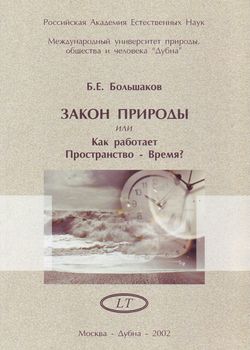 ПОСЛЕДНИЕ ЭКЗЕМПЛЯРЫ ТИРАЖА
ПОСЛЕДНИЕ ЭКЗЕМПЛЯРЫ ТИРАЖА